Commissioned 14 October 1941 Launched 21 March 1941 Weight 8,128 tons Draft 5 m | Namesake Trinidad Laid down 21 April 1938 Construction started 21 April 1938 Length 169 m Displacement 7.257 million kg | |
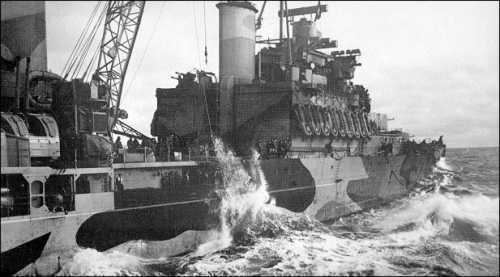 | ||
Fate Damaged in air attack and scuttled 15 May 1942 | ||
HMS Trinidad was a Royal Navy Crown Colony-class cruiser (also known as the Fiji class). She was lost while serving in the Arctic on convoy duty after being damaged escorting PQ-13 in 1942.
Contents
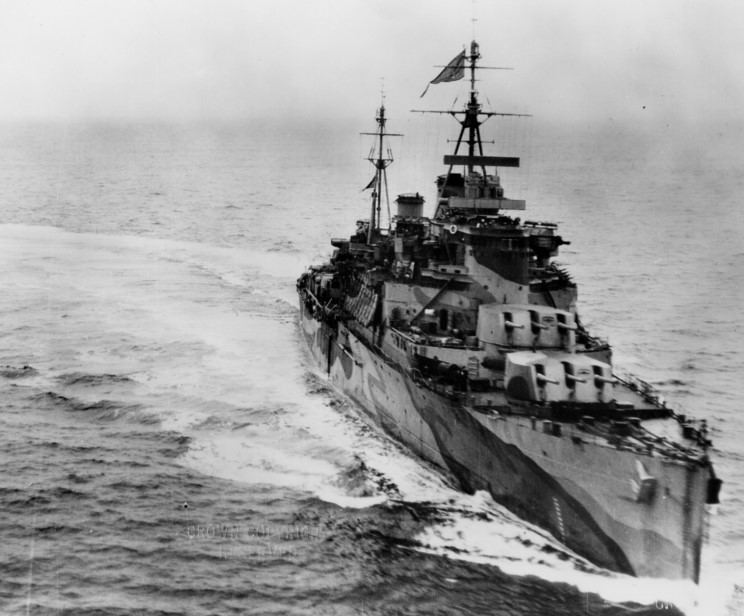
Early career
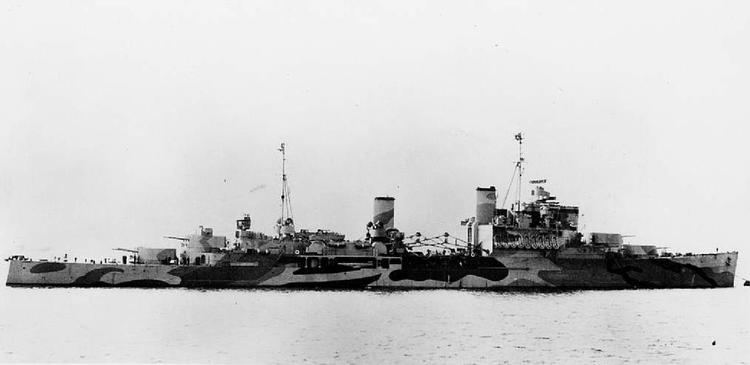
Trinidad was built by HM Dockyard Devonport. She was laid down on 21 April 1938, launched 21 March 1941 and commissioned on 14 October 1941. The ship served with the British Home Fleet during her brief career.
Loss
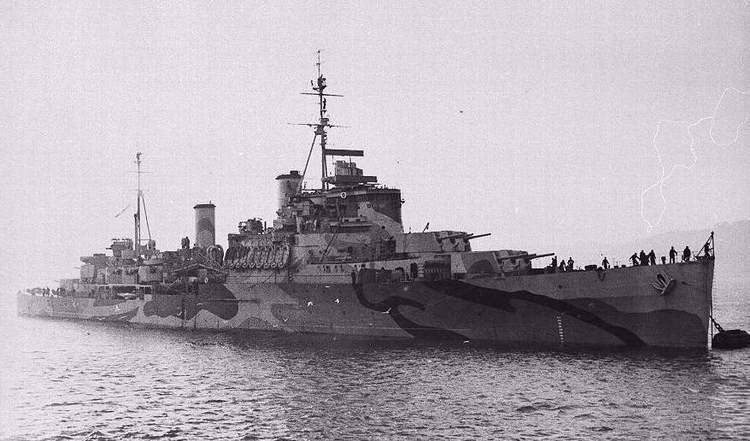
While escorting Convoy PQ-13 in March 1942, she and other escorts were in combat with German Narvik-class destroyers. She hit and sank the German destroyer Z26 and then launched a torpedo attack. One of her torpedoes had a faulty gyro mechanism possibly affected by the icy waters. The path of the torpedo formed a circular arc, striking Trinidad and killing 32 men. One of the survivors was composer George Lloyd, a Royal Marines bandsman who had earlier written the ship's official march. This was performed at the Last Night of the Proms on 7 September 2013, in the presence of the last surviving crewman from Trinidad.
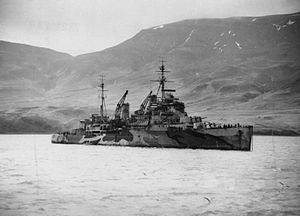
Trinidad was towed clear of the action, and was then able to proceed under her own power towards Murmansk. The German submarine U-378 attempted to engage and sink the damaged cruiser, but was spotted and attacked by the destroyer Fury. On arrival in Murmansk she underwent partial repairs.
She set out to return home on 13 May 1942, escorted by the destroyers Foresight, Forester, Somali and Matchless. Other ships of the Home Fleet were providing a covering force nearby. Her speed was reduced to 20 knots (37 km/h) owing to the damage she had sustained. En route, she was attacked by more than twenty Ju-88 bombers on 15 May 1942. All attacks missed, except for one bomb that struck near the previous damage, starting a serious fire. Sixty-three men were lost, including twenty survivors from the cruiser Edinburgh, which had been sunk two weeks earlier. The decision was taken to scuttle her and she was torpedoed by Matchless and sank in the Arctic Ocean, north of North Cape. Among the victims there were four Czechoslovak airmen en route to Great Britain – Sergeant Vratislav Laštovička, Corporals Jan Ferák, Josef Návesník and Bohuslav Zikmund (three other airmen were rescued).
